Introduction
The Ultimate Guide to Chesapeake Bay Retriever offers a complete overview of this breed.
- They are intelligent and versatile, excelling in various activities and tasks
- This guide covers essential information about their care, training, and health
- Learn how to keep your Chesapeake Bay Retriever happy and well-behaved
- Understanding their needs ensures a healthier, more fulfilling relationship
- Explore the traits, care tips, and common concerns for this unique breed
1. Breed Overview
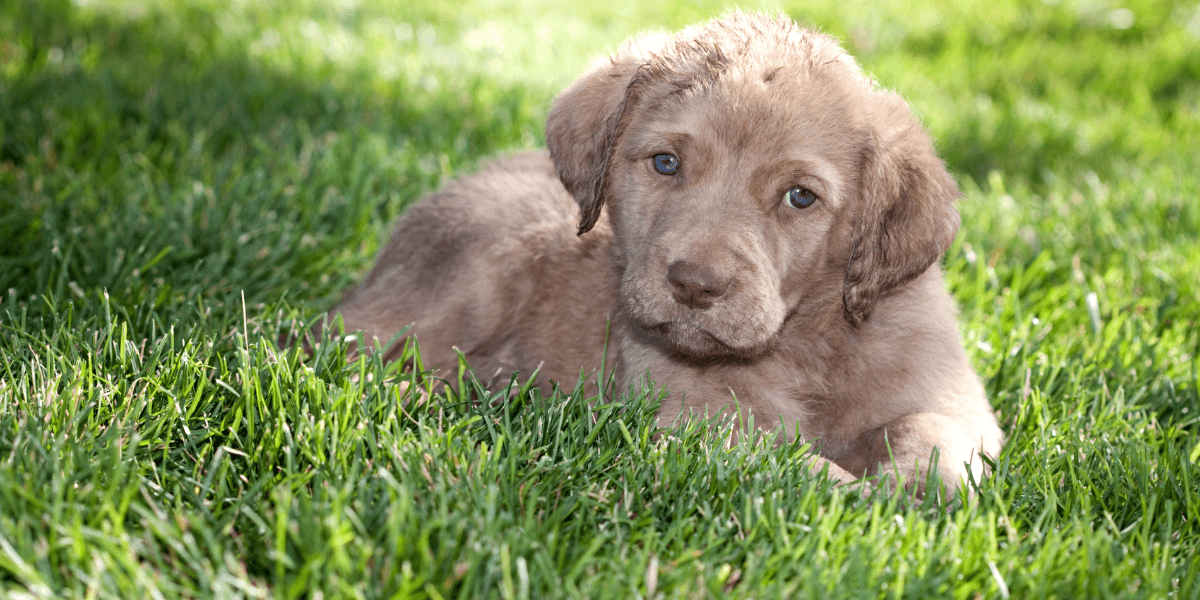
Chesapeake Bay Retrievers are sturdy, intelligent, and hardworking dogs.
- History: Originated in the U.S. for waterfowl hunting and retrieving
- Size: Medium to large, males weigh 65-80 lbs, females 55-70 lbs
- Coat: Dense, waterproof double coat to protect from harsh conditions
- Temperament: Loyal, courageous, and protective of their family
- Energy Level: High, needs daily exercise and mental stimulation
- Lifespan: Typically 10-13 years with proper care and attention
- Colors: Common colors include brown, sedge, and dead grass
- Intelligence: Highly trainable and responsive to commands
2. Personality Traits
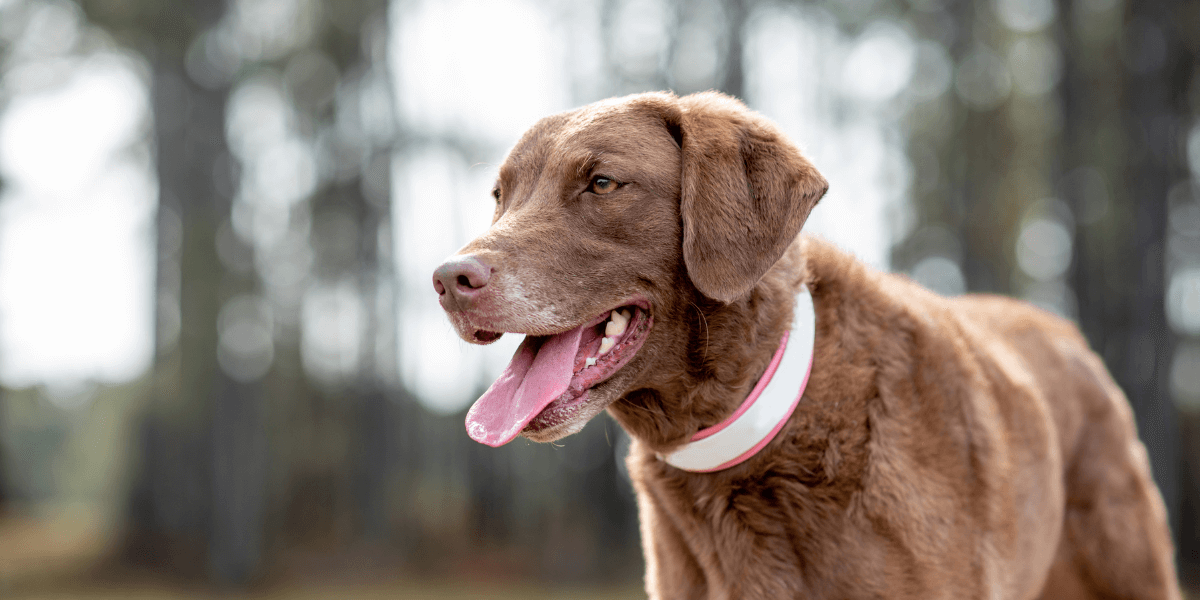
Chesapeake Bay Retrievers are known for their distinctive personalities.
- Loyal: Strong attachment to their family and protective nature
- Intelligent: Quick learners, excel in various dog sports and tasks
- Independent: Can be stubborn, requiring patient and consistent training
- Alert: Naturally watchful, making them excellent watchdogs
- Friendly: Generally good with children and other pets if socialized early
- Active: High energy levels need regular physical and mental activities
- Determined: Persistent in tasks, especially in hunting or retrieving
- Confident: Self-assured, often displaying boldness in new situations
3. Training and Exercise Needs
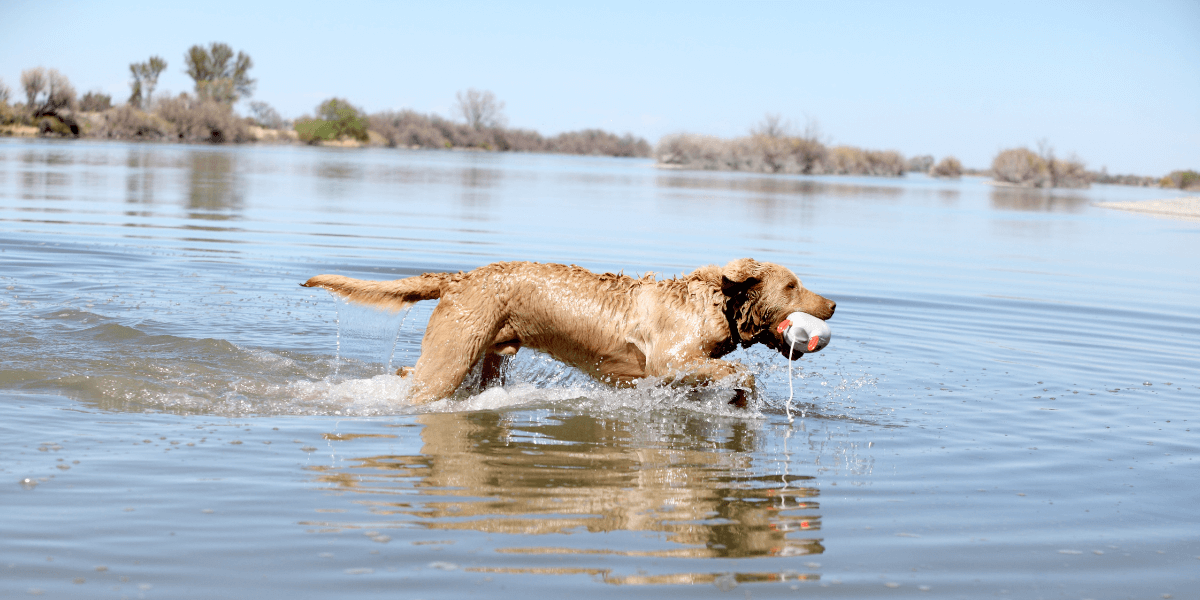
Training and exercise are crucial to managing this active, intelligent breed.
- Basic Training: Start with basic commands and obedience training early
- Socialization: Expose to different people, pets, and environments
- Positive Reinforcement: Use treats and praise to encourage good behavior
- Regular Exercise: Needs at least 30-60 minutes of exercise daily
- Mental Stimulation: Provide puzzle toys, training sessions, or games
- Advanced Training: Consider agility, tracking, or obedience sports
- Consistency: Be firm and consistent to handle their independent nature
- Avoid Harsh Methods: Use gentle training techniques for best results
4. Nutrition and Feeding
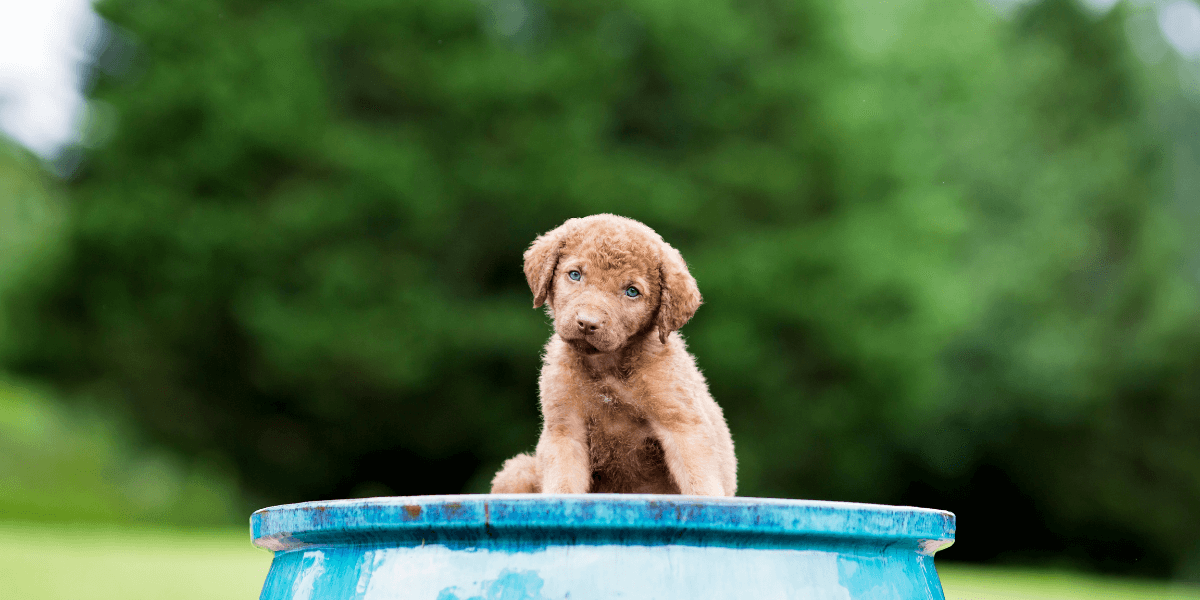
Nutrition and feeding are vital aspects covered in the ultimate guide to Chesapeake Bay Retriever.
- Balanced Diet: Provide high-quality dog food with essential nutrients
- Portion Control: Monitor feeding to prevent obesity or overfeeding
- Age-Appropriate: Choose food suitable for puppies, adults, or seniors
- Special Needs: Address specific dietary needs based on health conditions
- Fresh Water: Ensure access to clean water at all times
- Avoid Human Foods: Keep harmful foods like chocolate or grapes away
- Feeding Schedule: Maintain a consistent feeding routine daily
- Treats: Use healthy treats in moderation to avoid weight gain
Ensure your Chesapeake Bay Retriever's health by exploring our guide to optimal nutrition and supplements.
5. Grooming and Coat Care
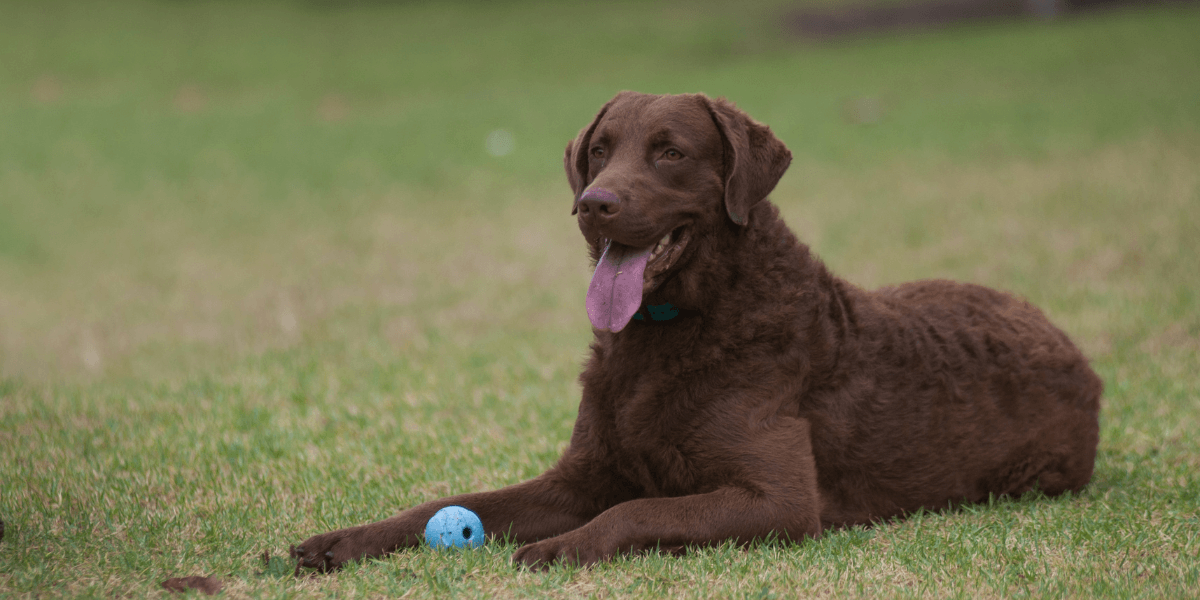
Regular grooming helps maintain the Chesapeake Bay Retriever's coat health.
- Brushing: Brush weekly to remove loose hair and prevent matting
- Bathing: Bathe only when necessary to preserve natural oils
- Nail Trimming: Trim nails regularly to prevent discomfort and injury
- Ear Care: Check and clean ears weekly to prevent infections
- Dental Hygiene: Brush teeth regularly or provide dental chews
- Seasonal Shedding: Expect seasonal shedding, especially in spring and fall
- Coat Protection: Use dog-friendly sunscreen on exposed skin areas
- Parasite Control: Regularly check for fleas, ticks, and other parasites
6. Common Health Concerns
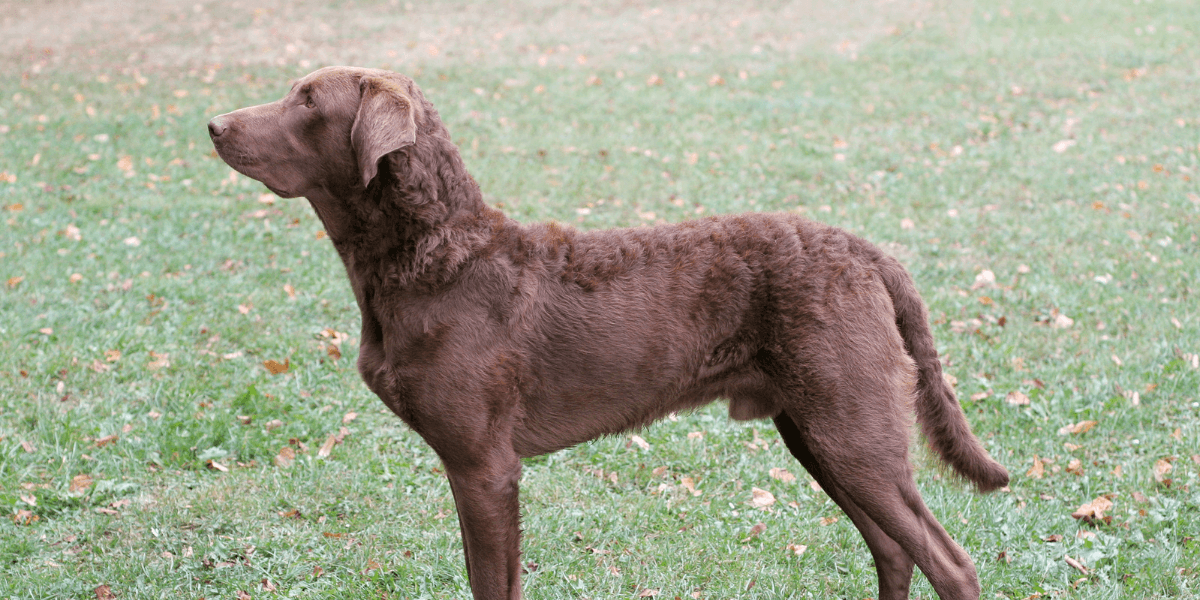
The ultimate guide to Chesapeake Bay Retriever highlights common health concerns and prevention tips.
- Hip Dysplasia: Abnormal hip joint development causing pain and arthritis
- Elbow Dysplasia: Inherited condition affecting the front legs and joints
- PRA: Progressive Retinal Atrophy, a genetic eye disorder causing blindness
- Bloat: Life-threatening stomach condition requiring immediate attention
- Allergies: Skin irritation caused by food, environmental, or flea allergies
- Hypothyroidism: Underactive thyroid leading to weight gain and lethargy
- Ear Infections: Common due to floppy ears trapping moisture and debris
- Obesity: Excess weight can lead to various health problems
Learn how to prevent and manage hip dysplasia in your Chesapeake Bay Retriever with our expert tips.
7. Living Environment and Lifestyle
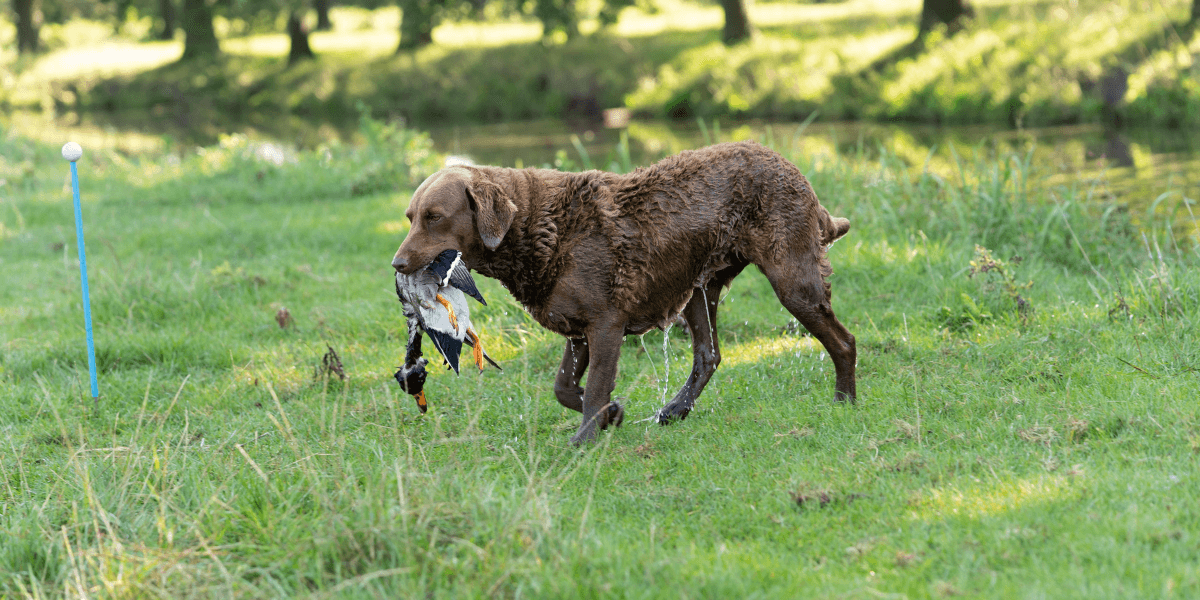
Provide a suitable environment to keep your Chesapeake Bay Retriever happy.
- Space: Needs space to run and play, preferably a fenced yard
- Indoor Living: Adapt well to indoor living with adequate exercise
- Swimming: Loves water, so access to safe swimming areas is beneficial
- Family Interaction: Thrives on companionship and being part of the family
- Cold Tolerance: Can handle cold weather due to their dense coat
- Hot Weather: Ensure shade and water in hot climates to prevent overheating
- Secure Fencing: A strong fence prevents roaming and keeps them safe
- Travel: Generally good travelers if accustomed from a young age
Provide your Chesapeake Bay Retriever with comfort by choosing the best orthopedic beds available.
FAQs
1. What is the average lifespan of a Chesapeake Bay Retriever?
- They typically live 10-13 years with proper care
2. How much exercise does a Chesapeake Bay Retriever need?
- They require at least 30-60 minutes of exercise daily
3. Are Chesapeake Bay Retrievers good with children?
- Yes, they are generally friendly if socialize early
4. What is the best diet for a Chesapeake Bay Retriever?
- A balanced diet with high-quality dog food and essential nutrients
5. How often should I groom my Chesapeake Bay Retriever?
- Weekly brushing and regular nail, ear, and dental care are essential
6. What are common health issues in Chesapeake Bay Retrievers?
- Hip dysplasia, PRA, bloat, allergies, and hypothyroidism are common
7. Can Chesapeake Bay Retrievers live in apartments?
- Yes, with adequate exercise and mental stimulation
Conclusion
- The Ultimate Guide to Chesapeake Bay Retriever helps you understand this unique breed
- Proper training, nutrition, and grooming are key to a healthy, happy dog
- Regular vet visits help detect and manage potential health issues early
- They thrive in active families that provide mental and physical stimulation
- Understanding their needs ensures a strong bond and a fulfilling relationship
- Stay informed and proactive to give your Chesapeake Bay Retriever the best care



